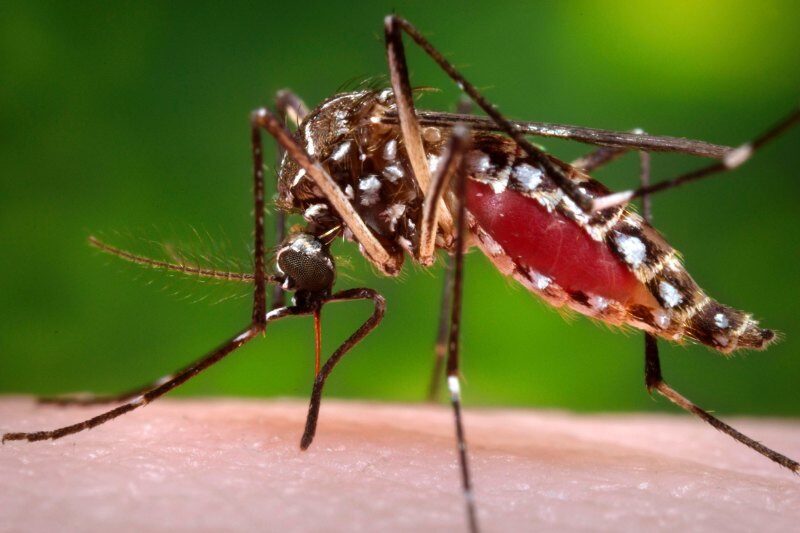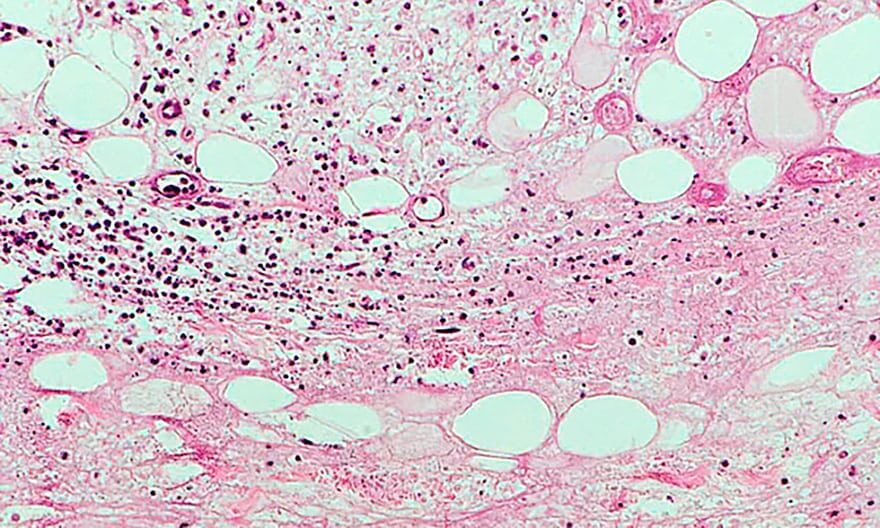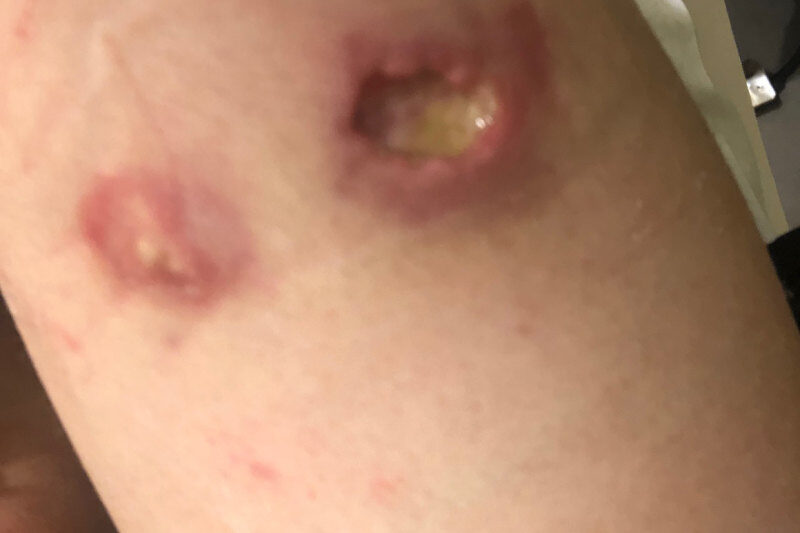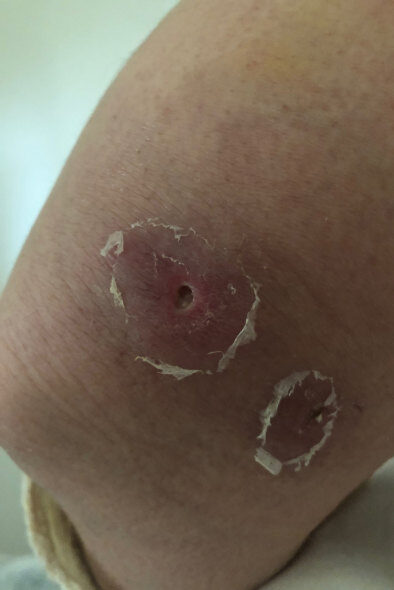Victorian Chief Health Officer Brett Sutton said on Tuesday that the risk of acquiring the ulcer in those areas was considered low, but "this is the first non-coastal area in Victoria to be recognised as a potential area of risk".
"A genetic analysis of bacteria isolated from these people as part of a research project suggests a common source of infection in the area," Professor Sutton said in a health advisory issued to medicos and residents on Tuesday.
"Lesions typically present as a slowly developing painless nodule or papule which can initially be mistaken for an insect bite. They can progress to a destructive skin ulcer, which is known as Buruli ulcer or Bairnsdale ulcer."
Internationally renowned Buruli ulcer expert Paul Johnson said what was significant about the latest cases was that it appeared the bacterium had been acquired in the inner and north-western suburbs of Melbourne.
"People in places like West Brunswick and Moonee Ponds have had it before, but nobody has really thought that they actually got it there," Professor Johnson said.
"It has always been thought they've got it down the beach like everybody else does, but this time we know that they did get it there. We are absolutely certain that there is a little bit of local transmission, not very much, but in those suburbs as mentioned by the Department of Human Services."
It is not known how people become infected, although it's increasingly thought mosquitoes play a role in transmission.
The bacteria had also been detected in the faeces of a local possum in Essendon, in Melbourne's inner north, but the source had not yet been established.
"While humans go on holiday possums don't, so we now know that [the bacterium] is now there beyond reasonable doubt," Professor Johnson said.
"What is different this time, also, is that as well as having people who think they've got it locally, we've also identified a possum that had to be euthanised that had Buruli ulcer. We've been able to use sequencing to show that the human and the possum are linked."
The disease is not transmissible from person to person, and there is no evidence of transmission between possums and humans, the Health Department said.
If left untreated, the ulcers can require surgery or lead to amputation in extreme cases.
Two cases were previously detected in residents in the city's western suburbs, including Seddon, but when they were reported in late 2018 authorities said they were yet to establish whether they became infected while travelling into affected areas.
Ulcer cases had been concentrated on the Mornington and Bellarine peninsulas. Rye, Blairgowrie and Sorrento are among the highest risk areas, and the disease had also been found in concerning levels in places such as Ocean Grove, Barwon Heads, Frankston and Seaford.
At least 21 cases of the ulcer have been confirmed so far this year, compared to 12 for the same period last year. There were 218 cases of the disease recorded in Victoria in 2020.
In 2020, five cases of Buruli ulcers were reported in the Moonee Valley area, compared to eight in 2019 and 10 in 2018.
There remains some uncertainty about what causes the skin infection, but scientists believe mosquitoes and possums are likely spreaders of the bacteria, resulting in human infections.
Researchers are set to lay thousands of mosquito traps in Victoria's coastal and bayside areas in an attempt to curb the spread of the ulcer, which has a long incubation period of up to nine months.
Comment: Note that they have already stated that they do not know for sure how it spreads.

Doherty Institute microbiology professor Tim Stinear said genomic testing had been conducted on a possum handed in to wildlife carers in the Essendon area.
The tests confirmed the animal carried the bacteria. He said tests of possum faeces in the area had also shown evidence of the disease.
"When you have possums that carry the bacteria and more than one case in humans you have good evidence of local transmission," he said.
Professor Stinear said it was worrying the disease was spreading to new areas but early diagnosis and antibiotics enabled the condition to be treated effectively.
Professor Johnson said while the new cases were of concern there was no need to panic.
All Skin lesions - red patches, ulcers or lumps - that don't heal should be assessed by a doctor and tested for Buruli ulcer.
"The purpose of the health alert is to draw the attention of local doctors and the public to it, not to cause panic because it's actually quite a slow moving disease," he said.
"It's not a massive increase in cases, it's just a definite change in the epidemiology that we need to monitor closely."






Comment: See also: